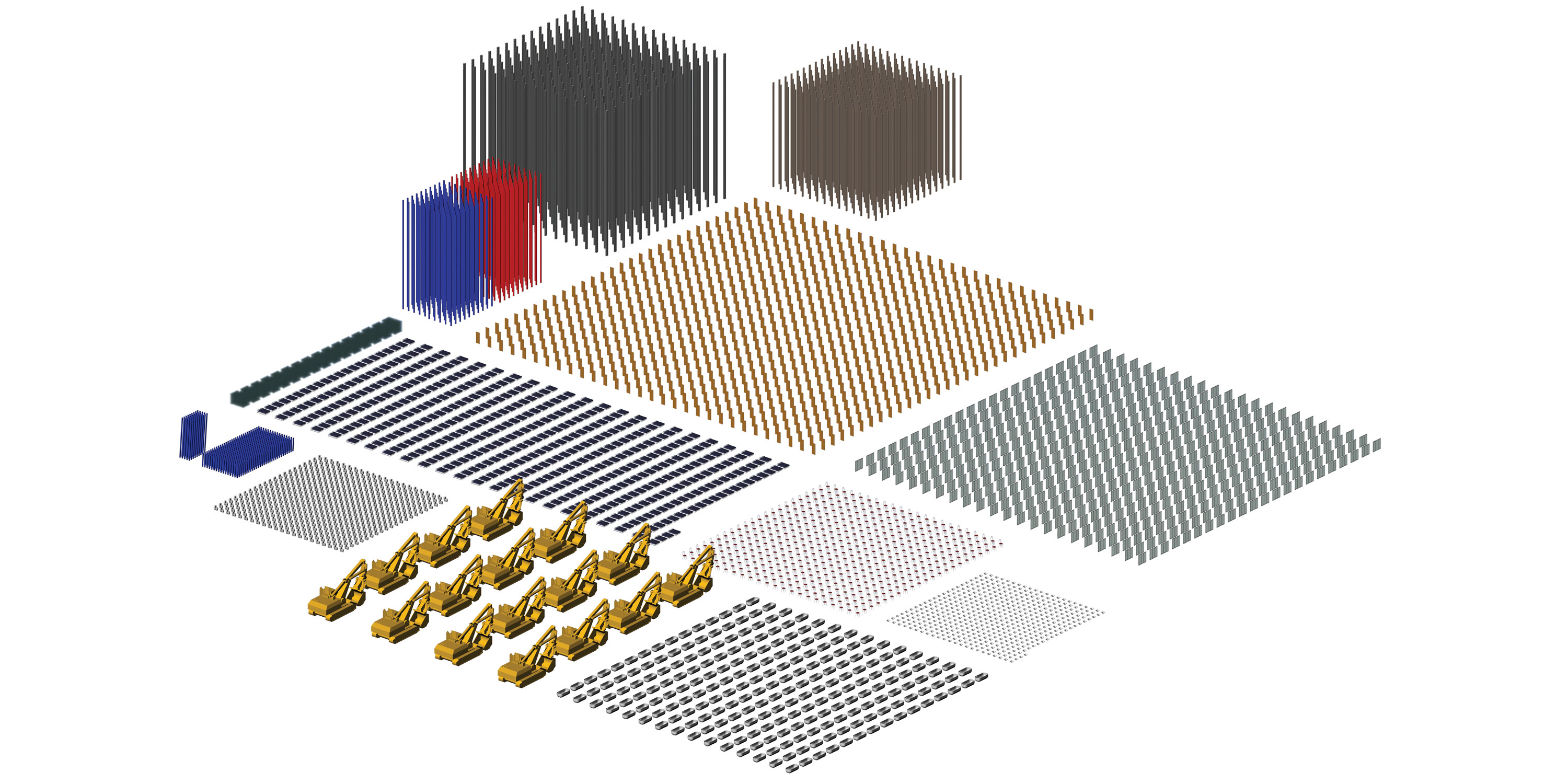Dismantle | Reassemble
GSAPP Advanced Studio
Instructor: Andres Jaque
Partners: Ranitri Weerasuriya
Fall 2017

Playa Blanca, Lanzarote has been the arena for the conflict between mass tourism and the trend of uncontrolled growth in opposition with the environmental awareness of the impact of tourism originally sparked by artist Cesar Manrique.
This conflict has evolved into a clash between the Lanzarote Government and Municipality of Yaiza following the issuing of the 1991 Insular Territorial Planning Plan and the 2000 Tourist Moratorium. In today’s Playa Blanca, the High Court of Justice of the Canary Islands annulled 15 hotel licenses in addition to Marina Rubicon’s license.
The situation in the coastal strip of the site reveals conflicting overlapping realities where the remnants of Playa Blanca’s history as a fishing village act as hotspots of confrontation to the mass tourism. The erasure of history through pushing out resident families for over a century results in a monolith society of transient tourism empty of everyday life.
The project takes into consideration these varying conflicts and aims to create an ecosystem of collaboration built on the existing touristic infrastructure in Playa Blanca. Through the introduction of a mixed society, the site is able to be revived and oriented towards reef building and a local fishing economy. The current transient tourism nature is tranformed into an integrated engagement with Playa Blanca creating a positive impact to tourism on the local environment.
Sandos Papagayo Hotel

Sandos Papagayo Hotel
The Sandos Papagayo Hotel was constructed on two plots originally separated by a road that provides access to the beach. This road falls under the 200m requirement for beach accessibility under the Coastal Act in the Spanish Law. However, the hotel was built over the road access, blocking direct access from the road network to the beach.
The number of beds originally licensed for the hotel in the Plan Partial Las Coloradas was 292 beds, however, 747 are built today. This declared the top two floors in the hotel illegal, building over the capacity that goes against the Plan Partial of Las Coloradas and the Tourist Moratorium of 2000.

Dismantle: Sandos Hotel
Hotel

Reef Building
The project suggests an alternative scenario where the hotel is able to continue functioning while at the same time achieving the legal status by giving up parts of the hotel that have been built above the limit set by Plan Partial Las Coloradas. Also, the project provides access to the beach directly from the road network by creating a pathway that directly cuts through the hotel.
The project proposes “dismantling” as a process instead of complete demolition by taking apart these “illegal” spaces and repurposing the materials so they could be reused elsewhere.
The voiding of spaces in the hotel allows for establishing new workshop spaces where the dismantled materials will be reworked and mesh units will be built for creating the artificial reef.
Marina Rubicon

The Coastal Act in the Spanish law defines the building offset from the coast in order to maintain
In 2000, the construction of Marina Rubicon began without a license because it was not originally meant to be built in this location but was built here nevertheless due to advantage provided by the shallow water depth. The construction sparked a series of protests due to the natural ecosystem of 20,000 sqm of sea-grass species native to this environment that was compromised. Also, the Marina went into a legal battle with the Medina family that originally were living in this location in Berrugo for over 100 years but were eventually evicted in 2010.
Today, the commercial area of Marina Rubicon sits outside of the Coastal Act building offset, privatizing public areas.

Fishing Community
The two story high Marina Rubicon dam wall creates a barrier that separates the inside of the marina from the ocean both visually and experientially. The project introduces insertion of platforms that create a fishermen market on the dam wall itself.
The fishing community will benefit through eliminating distribution agents. This is done by the fishermen directly selling their fish to clients in the tourist zone. People can consume the fish in restaurants/food kiosks or personally grill their fish in the public grills. This creates both a public space and a platform for integrating tourism with the context.
The fishermen housing is situated on top of the market in housing towers that are built by assembling the materials dismantled from the Sandos hotel such as doors, windows, grills, etc.
Doors, Windows, Handrails, Canopies dismantled from the Sandos Hotel are reassembled to create the new housing units for permanent residents at Playa Blanca.

